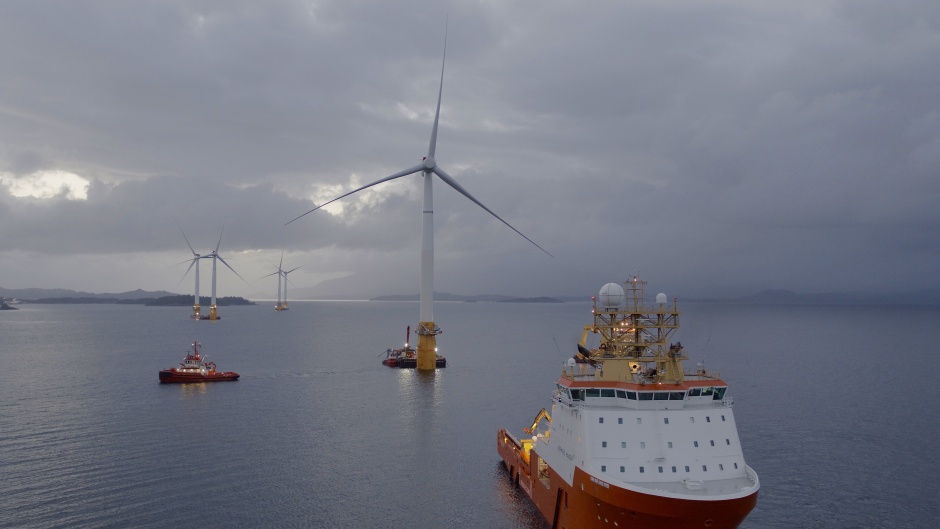Commercial-scale floating wind farm takes shape off Scottish coast
The construction of the world’s first commercial-scale floating wind farm is almost complete its developers have announced.

The £190m Hywind project, which is 75 per cent owned by Statoil and 25 per cent owned by Abu Dhabi energy firm Masdar, will see five 6MW floating wind turbines installed in up to 120mof water at Buchan Deep, around 25km from Peterhead on Scotland’s north east coast.
The 30MW wind farm, which is due to begin operating later this year (2017) is expected to generate around 135GWh of energy per year, enough electricity to power approximately 20,000 households.
Unlike conventional offshore turbines, which are fixed to the seabed by foundations, the Hywind device is attached to a cylindrical structure that floats in the water. Tethers anchored to the seafloor hold it in place.
Earlier this month, the first of five turbines for the wind farm was shipped from Stord in Norway, and the installation of all five turbines is expected to be complete by the end of August.
Register now to continue reading
Thanks for visiting The Engineer. You’ve now reached your monthly limit of news stories. Register for free to unlock unlimited access to all of our news coverage, as well as premium content including opinion, in-depth features and special reports.
Benefits of registering
-
In-depth insights and coverage of key emerging trends
-
Unrestricted access to special reports throughout the year
-
Daily technology news delivered straight to your inbox











Water Sector Talent Exodus Could Cripple The Sector
Well let´s do a little experiment. My last (10.4.25) half-yearly water/waste water bill from Severn Trent was £98.29. How much does not-for-profit Dŵr...